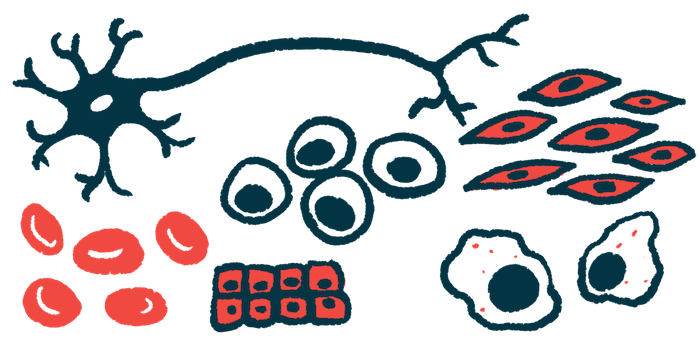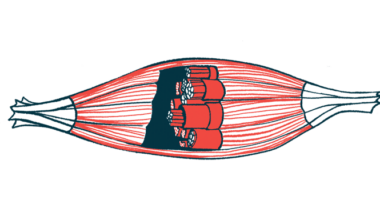COL13A1 gene levels may link to Pompe neuromuscular dysfunction
Study: Targeting glucose metabolism may be potential therapeutic strategy

Reduced activity of the COL13A1 gene, which codes for a protein involved in the communication between nerves and muscles, may contribute to the neuromuscular dysfunction and muscle weakness seen in people with Pompe disease, a new study suggests.
This gene’s activity seems to be mediated by levels of glucose — a simple sugar that serves as the body’s main source of energy. Glucose is stored inside cells as glycogen, a complex sugar molecule that accumulates to toxic levels in people with Pompe.
When patient-derived cells were kept in conditions without glucose, COL13A1 activity levels increased, while the amount of glycogen stored in cells decreased. These findings point to a possible link between glucose metabolism and the regulation of genes involved in neuromuscular function.
“This study suggests that targeting glucose metabolism may be a potential therapeutic strategy,” researchers wrote. “Therapeutic approaches that reduce [cellular] glycogen, such as dietary glucose restriction or glycogen synthesis inhibitors, could help normalize COL13A1 expression and improve muscle function.”
The study, “Transcriptional profiling reveals glucose-dependent regulation of COL13A1 mRNA in Pompe patients: Prospect for a novel disease mechanism,” was published in Genes & Diseases.
Gene expression profiles analyzed to ID potential disease pathways
Pompe disease occurs due to a lack of an enzyme that breaks down glycogen into glucose. Without the enzyme, glycogen builds up in cells, particularly in muscle cells, causing progressive muscle weakness.
While enzyme replacement therapy has significantly improved outcomes, it does not work for everyone, and some patients may also experience reduced effectiveness over time. As a result, it’s important to better understand the disease’s underlying mechanisms to identify potential new targets.
With that in mind, researchers at the Centre for Medical Genetics in Belgium analyzed gene expression profiles — essentially, which genes are turned on or off, and how active they are — to identify potential pathways involved in the disease. They used skin fibroblasts, a type of connective tissue cell, collected from four people with Pompe disease and four healthy individuals.
A total of 122 genes were differentially expressed in Pompe patients, including 74 that were present at higher levels than in controls and 48 that were found at lower levels. Most genes were involved in relevant pathways for muscle structure and function.
The team then selected for validation 10 genes with reduced activity in Pompe that were related to muscle contraction, muscle tone, and function of the neuromuscular junction — the site where neurons and muscles communicate to control voluntary movements.
COL13A1 activity levels may be contributing to muscle dysfunction
In a larger group of 16 Pompe patients and 10 controls, results confirmed a consistent decrease in the expression of the PIK3R1, GABRB3, COL13A1, and KCNMA1 genes. But the researchers focused on COL13A1, the expression of which was significantly reduced compared with controls.
COL13A1 codes for a protein at the cell membrane called collagen type XIII. This collagen protein plays a key role in the formation and maturation of the neuromuscular junction, stabilizing the clustering of acetylcholine receptors (AChR) at the surface of muscle cells. AChRs are essential for the communication between nerves and muscle cells.
Because mutations in both copies of the COL13A1 gene are linked to a disease whose symptoms, including muscle weakness and reduced muscle tone, overlap with Pompe’s, the researchers hypothesized that a reduction COL13A1 activity levels may be contributing to muscle dysfunction in these patients.
By linking glycogen metabolism with gene expression changes at the neuromuscular junction, our findings provide new insights into the complex pathophysiology of this disorder, offering therapeutic opportunities.
To know more, they grew patients-derived fibroblasts in glucose-free conditions, which led to a reduction in glycogen levels and an increase in COL13A1 expression. A subsequent gene expression analysis of these cells indicated a differential expression in genes related to neuronal processes, including AChR signaling.
“By linking glycogen metabolism with gene expression changes at the neuromuscular junction, our findings provide new insights into the complex pathophysiology of this disorder, offering therapeutic opportunities,” the investigators concluded.
However, further experiments are needed to validate these findings and understand how they may contribute to developing more effective treatments.







